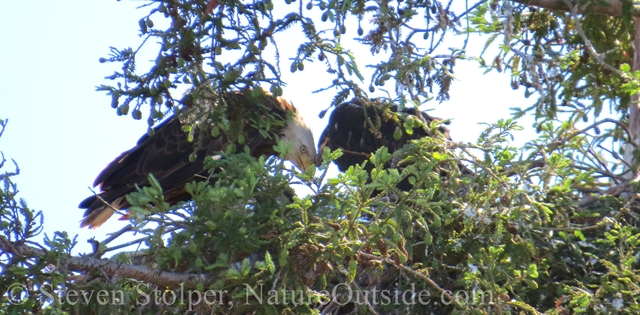
This article contains affiliate links…
I was almost thirty when I saw my first bird of prey in the wild. It was a red-tailed hawk soaring majestically overhead. I followed its flight, entranced, as it soared above the mountains in the distance.
Yes, I lived in suburban New York and then California. But the reason I never saw birds of prey is because I grew up in the shadow of DDT. The insecticide was banned in the United States in 1972, thanks to Rachel Carson’s landmark book Silent Spring. But the insecticide decimated the raptor population in the United States. It thinned eggshells, which resulted in increased infant mortality.
The Bald Eagle, our national symbol, was particularly hard hit. But since DDT was banned, their population has rebounded dramatically. In recent years, pioneers have ventured into California’s Silicon Valley, where I make my home. Nature’s resilience is truly amazing!
Yet the idea of seeing a Bald Eagle around my neighborhood seems utterly alien. They’re the “exotic birds” of the far north. The birds I see while Kayaking around Vancouver Island. Surely, we’ve removed too much of their nesting and feeding habitat for them to return to our cities.
And then a mating pair moved in…
Eagles go to School
I remember the headlines when the eagles arrived. The pair began building a nest in a tall redwood tree beside a local elementary school. The students and teachers were captivated by the birds. And so was the local news media.
That was two years ago, and I’ve been meaning to stop by to gaze at their nest. But one thing pushes out another and I never got around to it. So when the San Francisco Bay Bird Observatory organized a trip to observe the nest, I jumped at the chance.
The Eagles Nest
When I arrived at the location, I looked for the other birders. They weren’t difficult to spot.
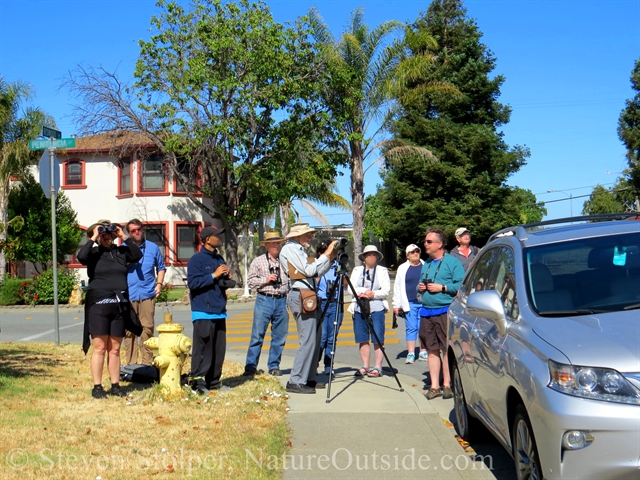
Can you spot the birders in this picture?
It’s a wonderful sunny morning and the sky is brilliant blue. There’s no wind to speak of. And the quiet is punctuated only by distant leaf blowers and the excited chatter of the birders.
The eagles selected a towering redwood in the only group of tall trees in the area. And the nest, composed of thick sticks, sits atop a large horizontal limb about 60 feet above the school grounds.
There are two chicks in the nest. Last year there was only one. The chicks are about three months old, and about ready to fledge. The young birds strengthen their flight muscles as they await the return of their parents. The birders tell me that the chicks may depart the nest as soon as next week.
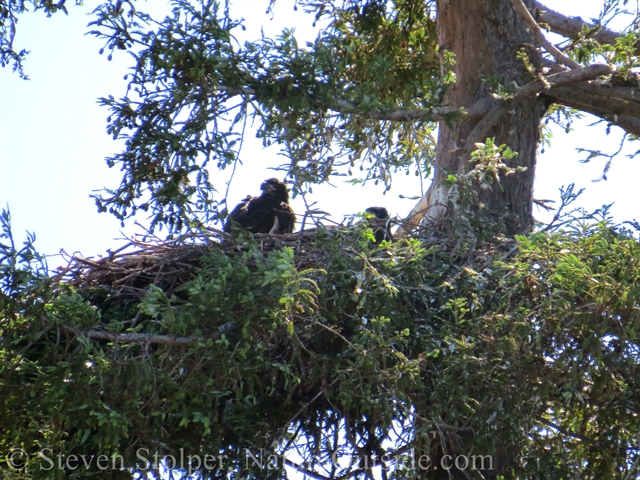
Two Bald Eagle chicks awaiting their parents
Feeding Time
My camera lens doesn’t capture much detail at this distance. But my binoculars provide a much better picture. The two chicks are sitting calmly when I hear the high-pitched piping of an adult Bald Eagle. I turn my gaze just in time to see the female gliding toward the nest. She’s huge! And she has what appears to be a good-sized coot in her talons.
The chicks call back to their mother. They sound like seagull calls played back at double speed.
She lands on the nest and places her prize between herself and the two chicks. The larger of two waits patiently to be fed.
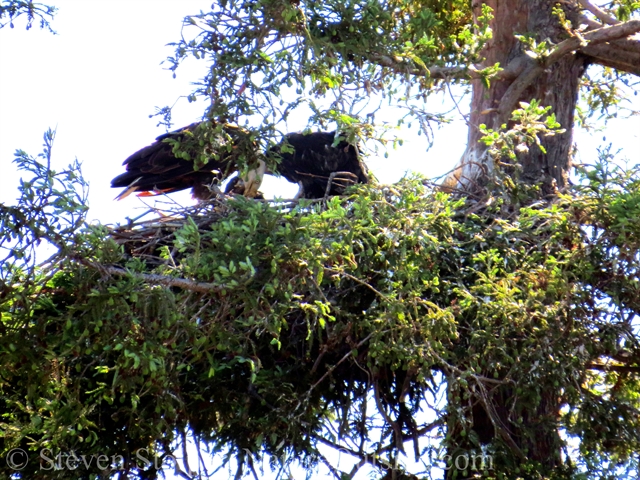
Momma Eagle tears a piece from the carcass. The second chick is in the background, facing us.
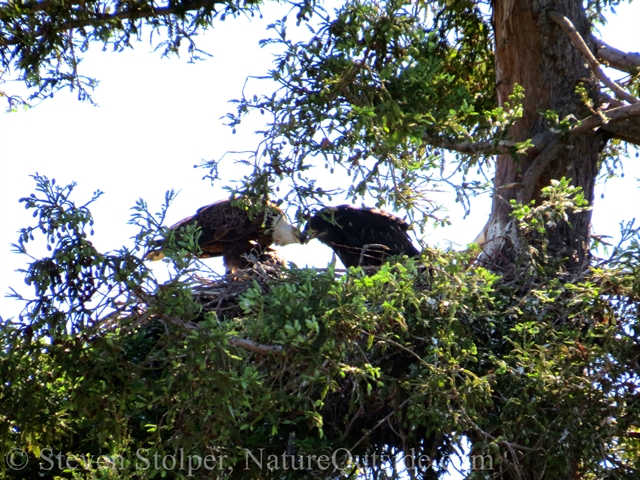
Yum! Fresh coot!
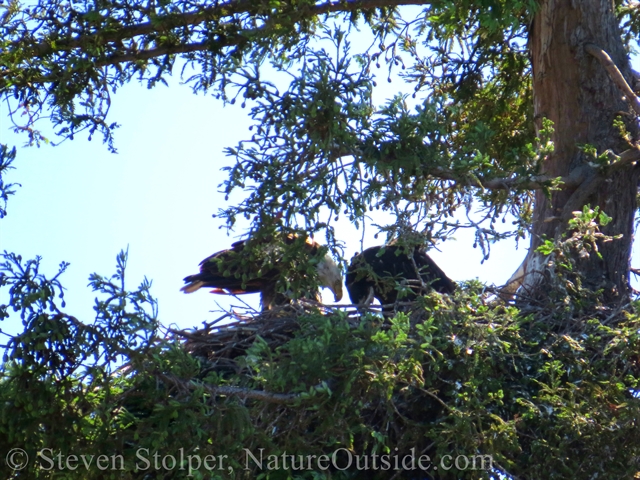
The chick consumes the food as Momma prepares to tear another piece from the carcass
We can tell it’s the female who’s returned. I’m told that males are 30% smaller than the females. And that females have a deeper mouth gape (base of a bird’s bill where the mandible and maxilla join) that runs farther back than their eye. Males don’t have any dark feathers on their heads. Nor do they have dark eyebrows. But I’m told that male Bald Eagles do have a dark ring around the eye and a dark spot below it.
The male arrives a few minutes later, perching in another of the tall trees. After the meal, the female takes to the air once again to seek food for her family.
Do you have Bald Eagles in your neighborhood?
It was thrilling to see Bald Eagles so close to home. And I expect this will become commonplace for many of us as they reclaim their former territory. People have destroyed a lot of their habitat. But I hope the eagles find a way to make their homes among us.
Do you have Bald Eagles near you? Are you hopeful they’ll return to your area? Leave a comment below to let me know.

Mother and child
Related Articles on NatureOutside
Urban Creatures – The Amazing Garter Snake
Urban Bushcraft and the Capacity to Wonder
For fun facts and useful tips, join the free Bushcraft Newsletter.



Leave a Comment